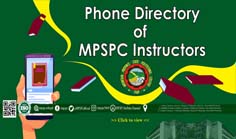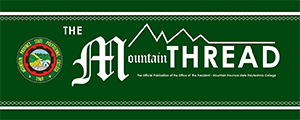BACKSTRAP WEAVING IN GUINZADAN, BAUKO, MOUNTAIN PROVINCE
(Pilar L. Palangyos & Teodorico D. Chacapna)
ABSTRACT
The study aimed to come up with a detailed documentation of designs, symbols, patterns, and colors on backstrap weaving. It was conducted in the three barangays of Guinzadan Norte, Guinzadan Central, and Guinzadan Sur from February 2011 to April 2012.
The documentary descriptive study made use of personal key interviews, direct observations, field visits, and photo documentation. The informants of the study were the amam-a, inin-a, the elders of the community, and the local weavers regarded as the source of reliable information and respected authority.
The result of the study showed that bark of sapot and bagbago tree were originally used as thread for weaving material until the introduction of cotton by Chinese merchants from Mangaldan. Natural dye yielding plants dammoney and kunig were used as indigenous dyes for tayum and mada. The instruments used for backstrap weaving are the ipitan, sakge-tan, balliga, tan-ayan, tobbongan, leletan, saudan, labayan, pudonan, sikadan,gatingting, and gaddalan.
The procedures in backstrap weaving involves la-bay, loyloy, po-don, sa-od, wawa, pili, go-on, abe, and da-it.
This study, revealed that products of backstrap weaving in the three barangays were part of their everyday life. Each woven product have different names which identify the gender, status and cultural identity of the people.

















